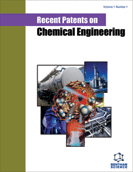Abstract
Coalescence of drops is an important process for the destabilization of liquid-liquid dispersions. This chapter presents the mechanism of coalescence of drops in dispersion. It also presents the theories of coalescence that are used at present. The film drainage theory and the stochastic theory of coalescence have been discussed explaining their merits and drawbacks. These models are evaluated with numerical examples. The role of van der Waals, electrostatic double layer, steric and hydration forces on the coalescence process has been discussed. The importance of adsorption of surfactant molecules at the liquid–liquid interface on coalescence time has been explained. Possible reasons behind the failure of the film drainage models in predicting the coalescence time in presence of surfactant have been explained. This chapter also presents the calculation of coalescence time in industrial equipment, experimental techniques employed for studying coalescence of a drop at a flat liquid–liquid interface, binary coalescence, and coalescence of two drops in motion. Directions for future research on coalescence have also been presented.
Keywords: Coalescence, disjoining pressure, drop, emulsion, film drainage theory, interfacial force, lubrication flow, surfactant, stochastic theory, thin liquid film.






















